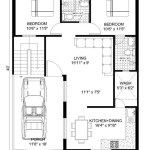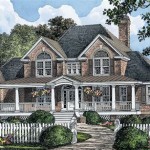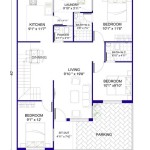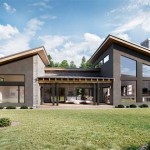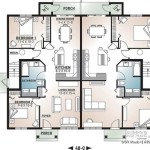Mountain Home Plans: Sloping Lot Design
Mountain homes offer a unique opportunity to embrace nature's beauty while creating a comfortable and inviting living space. Designing a mountain home on a sloping lot presents both challenges and opportunities, demanding careful planning and consideration of the terrain's natural features.
Sloping lot designs require specialized knowledge and expertise to ensure the stability, functionality, and aesthetics of the home. Here are some key factors to consider when designing mountain home plans with sloping lots:
1. Site Analysis and Terrain Evaluation
Thorough site analysis is crucial to understand the slope, soil composition, sun exposure, and drainage patterns of the lot. This information informs the home's placement, orientation, and foundation design to maximize views, minimize erosion, and prevent water damage.
2. Foundation Considerations
Sloping lots often require specialized foundation systems to accommodate the uneven terrain. Options include post-and-pier foundations for greater flexibility, retaining walls to stabilize the slope, or reinforced concrete slabs designed to resist movement.
3. Floor Plan Design
The floor plan should be tailored to the slope's contours to create functional and visually appealing living spaces. Split-level or stepped designs can follow the natural elevation changes, maximizing natural light and views from multiple levels.
4. Terracing and Landscaping
Terracing or retaining walls can create level areas for patios, gardens, and pathways, enhancing outdoor living and reducing the impact of the slope. Careful landscaping with native plants and drainage systems helps stabilize the terrain and minimize erosion.
5. Drainage and Water Management
Sloping lots require proper drainage systems to prevent water damage and erosion. Gutters, downspouts, and French drains should be strategically placed to channel water away from the house and prevent seepage into the foundation.
6. Access and Circulation
Accessing the home from the sloping lot must be carefully planned. Roadways, driveways, and walkways should be designed with proper grades and switchbacks to ensure safe and convenient movement.
7. Energy Efficiency
Energy efficiency is paramount in mountain homes, especially those on sloping lots where heating and cooling can be affected by elevation and wind patterns. Passive solar design, insulation, and energy-efficient appliances should be incorporated to minimize energy consumption.
Designing mountain home plans for sloping lots requires a collaborative approach between architects, engineers, and landscape designers. By carefully considering the terrain's characteristics and implementing innovative design solutions, it is possible to create homes that are not only aesthetically pleasing but also safe, sustainable, and comfortable for years to come.

Plan 68753vr Mid Century Modern Mountain House For Rear Sloped Lot Plans

Mountain Modern Steep Slope Hillside House Sloping Lot Plan

Taos Ridge Mountain Home Plans From House

100 Best Sloping Lot House Plan Ideas Design Hillside

Looking For The Perfect Affordable Cottage With A Large Covered Balcony Plan 1143

A Guide To Sloping Lot House Plans

Hillside And Sloped Lot House Plans

Best Simple Sloped Lot House Plans And Hillside Cottage

Hillside House Plans For A Rustic 3 Bedroom Mountain Home

Hillside House Plans Architecturalhouseplans Com

